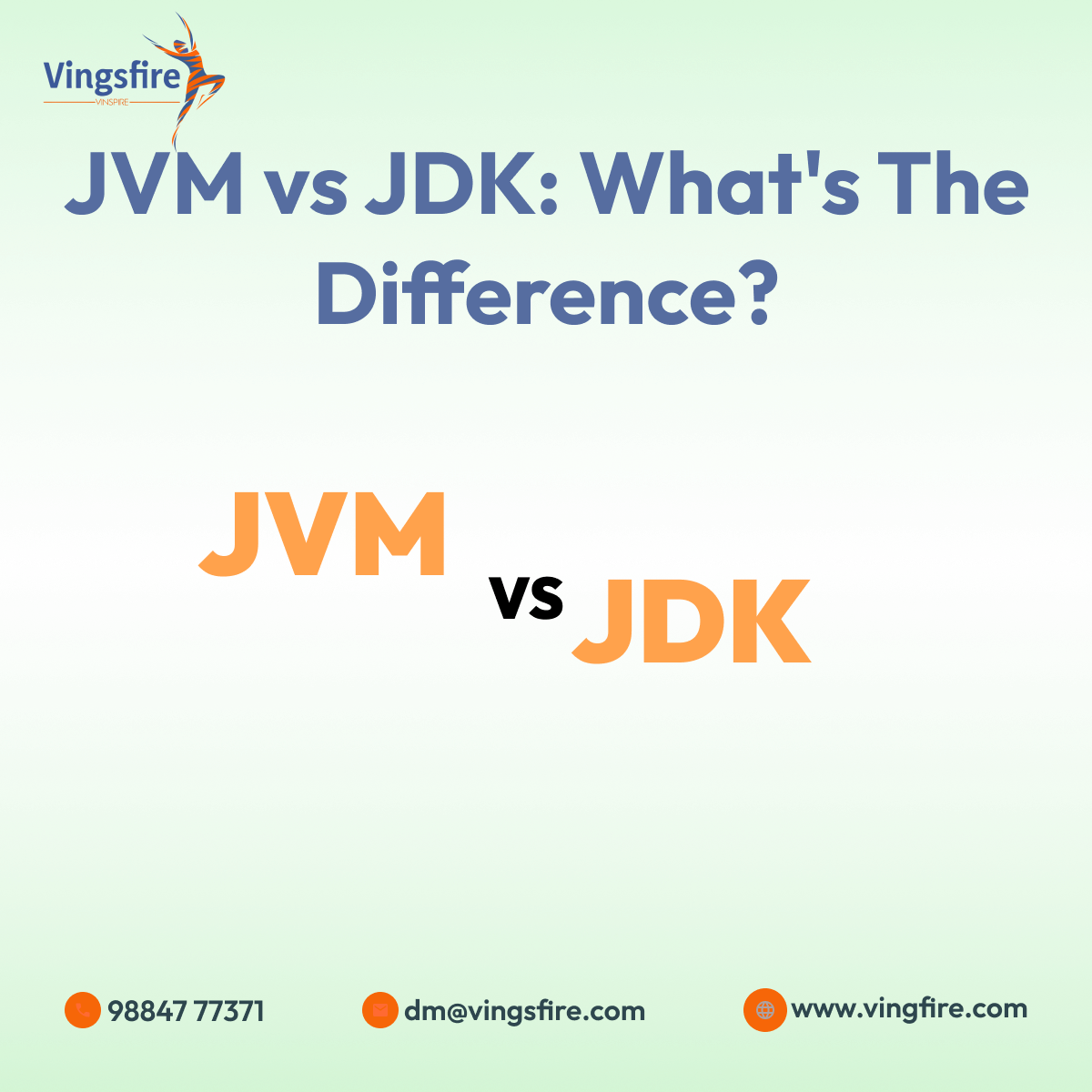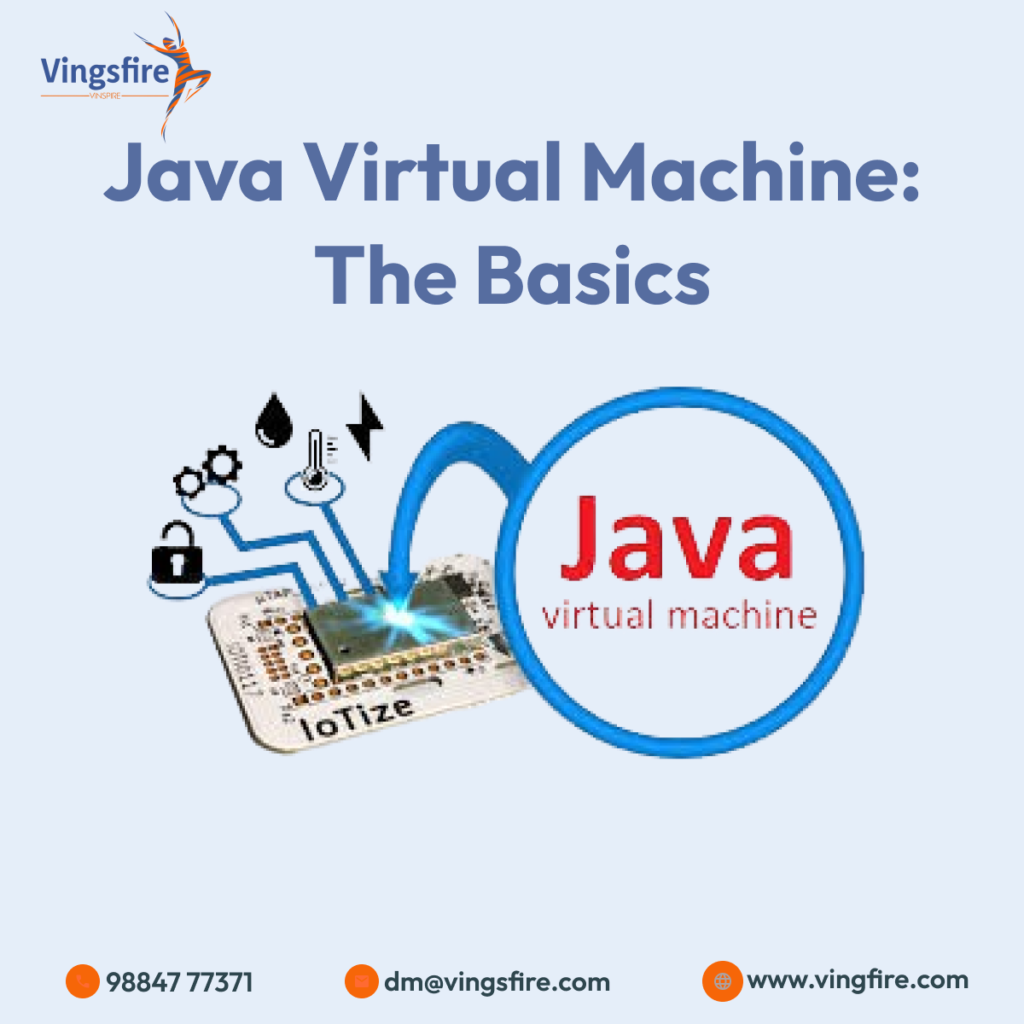Introduction:
Understanding the nuances between JVM (Java Virtual Machine) and JDK (Java Development Kit) is crucial for any Java developer or enthusiast. In this comprehensive blog post, we will unravel the distinctions between JVM and JDK, shedding light on their roles, functionalities, and why they are essential components in the world of Java programming.
LEARN MORE ABOUT VINGSFIRE:-
1.LINKEDIN
3.FACEBOOK
JVM (Java Virtual Machine)
Java Virtual Machine (JVM) is the cornerstone of Java’s platform independence. It acts as a virtualized execution environment for Java bytecode, enabling Java applications to run on any device or operating system that supports the JVM. JVM is responsible for interpreting or compiling Java bytecode into native machine code, making Java’s “write once, run anywhere” mantra a reality.
Key Features and Functions of JVM
JVM performs several critical functions, including memory management, garbage collection, and bytecode execution. It provides an abstraction layer between the Java application and the underlying hardware, ensuring consistent behavior across different platforms. JVM also plays a pivotal role in optimizing code execution through Just-In-Time (JIT) compilation, enhancing the overall performance of Java applications.
Unveiling the JDK (Java Development Kit)
While JVM is responsible for executing Java applications, JDK encompasses a broader set of tools and resources for Java development. JDK includes the Java Compiler, Java Runtime Environment (JRE), and various development tools, libraries, and documentation. In essence, JDK is a comprehensive software development kit that empowers developers to create, compile, and run Java applications.
Components of JDK
JDK comprises the following essential components:
- a. Java Compiler: Translates Java source code into bytecode.
- b. JRE (Java Runtime Environment): Includes libraries, Java Virtual Machine, and other components necessary for running Java applications.
- c. Development Tools: Debuggers, profilers, and other tools for Java application development.
- d. API Libraries: A vast collection of pre-built classes and methods for developers to use in their applications.
Relationship Between JVM and JDK:
JVM and JDK are interdependent. JDK includes the JVM, ensuring that developers have all the necessary tools for writing, compiling, and running Java code. When a Java program is executed, the JVM within the JDK comes into play, interpreting or compiling the bytecode generated by the Java compiler.
Why Understanding the Difference Matters
Clear comprehension of the distinctions between JVM and JDK is crucial for developers to navigate the Java development landscape effectively. Knowing when to use each and understanding their specific roles empowers developers to optimize their code, troubleshoot issues, and make informed decisions during the development life cycle.
Conclusion:
JVM and JDK are integral components of the Java ecosystem, each serving a unique purpose in the development and execution of Java applications. This blog has explored their definitions, functions, and the symbiotic relationship between them. Armed with this knowledge, developers can enhance their proficiency in Java programming and make strategic decisions for efficient and effective application development.


